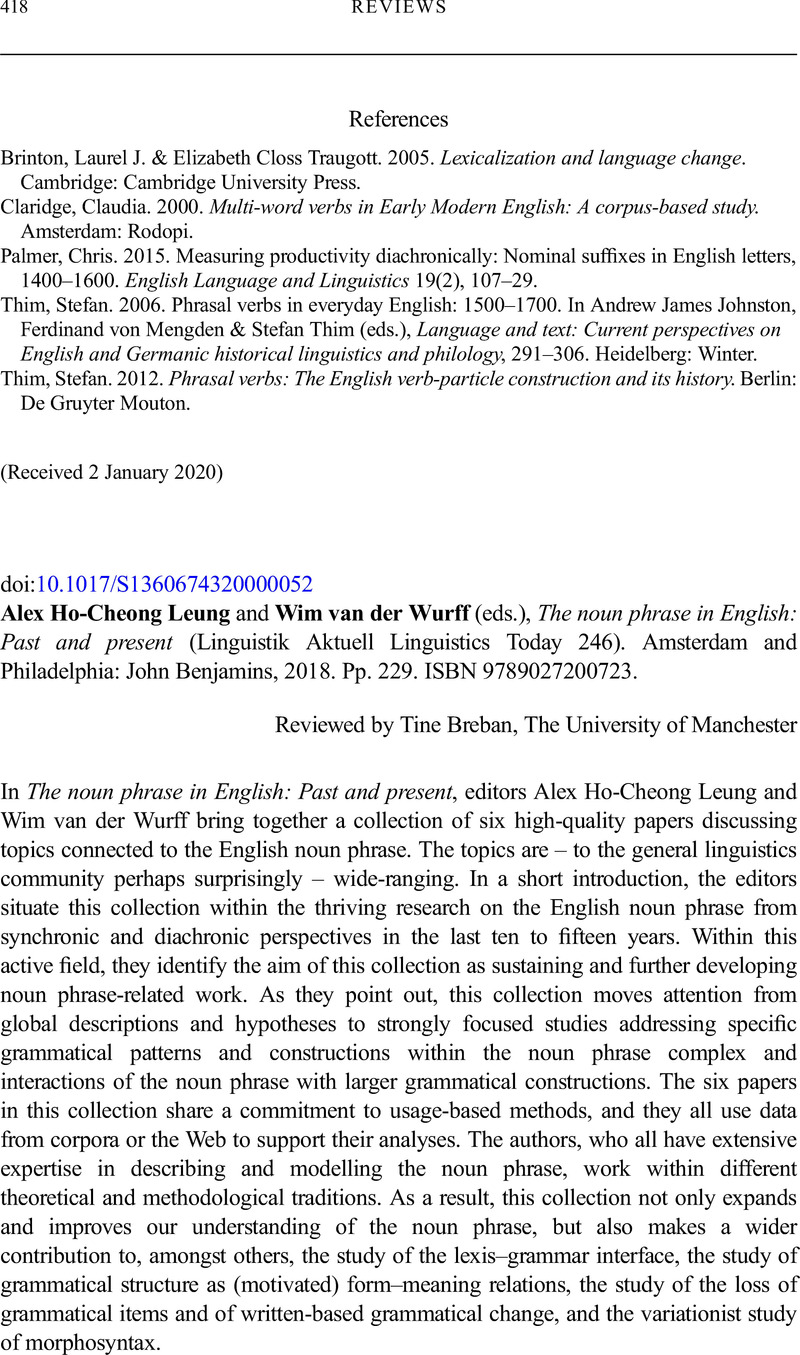No CrossRef data available.
Article contents
Alex Ho-Cheong Leung and Wim van der Wurff (eds.), The noun phrase in English: Past and present (Linguistik Aktuell Linguistics Today 246). Amsterdam and Philadelphia: John Benjamins, 2018. Pp. 229. ISBN 9789027200723.
Published online by Cambridge University Press: 11 March 2020
Abstract
An abstract is not available for this content so a preview has been provided. Please use the Get access link above for information on how to access this content.

- Type
- Book Review
- Information
- Copyright
- Copyright © Cambridge University Press 2020
References
Adamson, Sylvia. 2000. A lovely little example: Word order options and category shift in the premodifying string. In Fischer, Olga, Rosenbach, Anette & Stein, Dieter (eds.), Pathways of change, 39–66. Amsterdam and Philadelphia: John Benjamins.CrossRefGoogle Scholar
Postma, Gertjan. 2010. The impact of failed changes. In Lucas, Christopher, Watts, Sheila, Breitbarth, Anne & Willis, David (eds.), Continuity and change in grammar, 296–302. Amsterdam and Philadelphia: John Benjamins.Google Scholar
Vandewinkel, Sigi & Davidse, Kristin. 2008. The interlocking paths of development towards emphasizer adjective pure. Journal of Historical Pragmatics 9, 255–87.CrossRefGoogle Scholar



